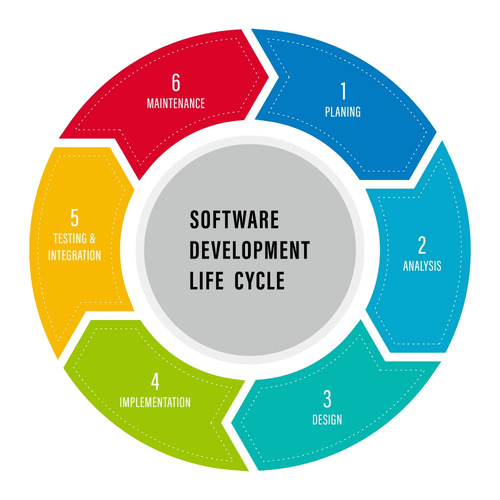Содержание
The product team structure also necessitates a lot of meeting time. The divisions in the matrix structure also demand meeting time, but some loss of type of team structure efficiency is regained by retaining functional departments. With a company’s growth comes the need to organize tasks and the people who do them.

It is a type of organizational management in which people with similar skills are pooled for work assignments, resulting in more than one manager to report to . A network organizational structure makes sense of the spread of resources. It can also describe an internal structure that focuses more on open communication and relationships rather than hierarchy. A matrix organizational chart looks like a grid, and it shows cross-functional teams that form for special projects. For example, an engineer may regularly belong to the engineering department but work on a temporary project .
Types Of Organizational Structures
If it’s a global company the grouping could be done according to countries. Divisions are separated by market, industry, or customer type. A large consumer goods company, like Target or Walmart, might separate its durable goods (clothing, electronics, furniture, etc.) from its food or logistics divisions. Let’s go through the seven common types of org structures and reasons why you might consider each of them. Join over thousands of organizations that use Creately to brainstorm, plan, analyze, and execute their projects successfully. Product – If a company is producing multiple products or offering different services it can be grouped according to the product or service.

The main advantage of the divisional structure is the independent operational flow, that failure of one company does not threaten the existence of the others. For example, all engineers may be in one engineering department and report to an engineering manager. But these same engineers may be assigned to different projects and might be reporting to those project managers as well.
The below example of a network org chart shows the rapid communication between entities. So in summary, when deciding on a suitable organizational chart, it is important to have an understanding of the current organizational structure of your company. The hierarchical model is the most popular organizational chart type. Consider the needs of your organization, including the company culture that you want to develop, and choose one of these organizational structures. Another form of divisional org chart structure is the multi-divisional structure. It’s a legit structure in which one parent company owns several subsidiary companies, each of which uses the parent company’s brand and name.
Product
Traditionally, business owners have arranged people in a triangular hierarchy that has the owner on top, managers in the middle and employees on the bottom. Companies needing more agility turn to newer structures that feature lateral rather than vertical reporting relationships. A horizontal or flat organizational structure fits companies with few levels between upper management and staff-level employees.

Traditionally, vertical organizations departmentalize people according to functions such as finance or marketing. The matrix structure retains the vertical hierarchy but adds a horizontal element. Employees each belong to two departments — a permanent functional department and a company division responsible for a product, program or project. Unlike the matrix, the product team structure abandons the vertical element, relying solely on cross-functional teams.
Geographic Divisional Org Structure
They are less hierarchical and they have flexible structures that reinforce problem-solving, decision-making, and teamwork. Divisional types of organizational charts have their own division which corresponds to either products or geographies. Each division contains the necessary resources and functions needed to support the product line and geography. It’ll come as no surprise that a team-based organizational structure groups employees according to (what else?) teams—think Scrum teamsor tiger teams. A team organizational structure is meant to disrupt the traditional hierarchy, focusing more on problem-solving, cooperation, and giving employees more control. In aMatrix organizational structure, the reporting relationships are set up as a grid, or matrix, rather than in the traditional hierarchy.
Lucidchart is the intelligent diagramming application that empowers teams to clarify complexity, align their insights, and build the future—faster. With this intuitive, cloud-based solution, everyone can work visually and collaborate in real time while building flowcharts, mockups, UML diagrams, and more. At some point, you have likely seen an organizational chart for your company. Back in the day I used to dread creating organisational charts. With the technology available now, it’s so much easier to create even the most complex of charts, no matter which of the above options best suits your business.
Globalization has allowed people in all industries around the world to produce goods and services cooperatively. Especially, manufacturing companies must work together with suppliers around the globe while keeping the cost to a minimum while producing high-quality products. The typical org chart looks like a pyramid, your C-level executives at the top with lines stretching down to middle management and finally staff-level employees. The chain of command and each department head has control over their departments.
Our organizational chart software supports all the types mentioned below. Is there a post on the advantages and disadvantages of using the above mentioned organizational charts ? Network organizational structure helps visualize both internal and external relationships between managers and top-level management. They are not only less hierarchical but are also more decentralized and more flexible than other structures.
- Instead of writing her novel , Shannon spends her free time running, reading, obsessing about Oscar season, and watching Gilmore Girls on loop.
- Let’s go through the seven common types of org structures and reasons why you might consider each of them.
- A team organizational structure is meant to disrupt the traditional hierarchy, focusing more on problem-solving, cooperation, and giving employees more control.
- A matrix organizational chart looks like a grid, and it shows cross-functional teams that form for special projects.
Unlike other structures, specialized and supportive services do not take place in these organizations. In one of our previous articles, we discussed organizational chart best practices. Now let’s take a look at types of organizational chart structures which can be used in different scenarios.
Divisional Structure
Besides economies of scale, the matrix structure avoids waste, because retaining functional departments means resources don’t have to be duplicated between divisions. In the traditional structure, functional departmentalization equals rigidity and control. The product team organizational structure boasts even more flexibility.
The action you just performed triggered the security solution. There are several actions that could trigger this block including submitting a certain word or phrase, a SQL command or malformed data. I handle marketing stuff here at Creately including writing blog posts and handling social media accounts. Shannon Williams graduated from BYU in English and then turned to the world of marketing.
The matrix structure, meanwhile, assigns employees two managers. First, employees report to their respective functional managers. Employers also report to the divisional manager charged with oversight of the project, product or program to which employees are assigned.
Without a bureaucracy to bog things down, decisions are quick and employees are rapidly deployed. The product teams empower employees who respond by showing initiative, commitment and high morale. The main disadvantage of the matrix structure lies in the doubled supervision of employees. It creates potential conflicts of loyalty and competition between functional and divisional goals. Product teams avoid this disadvantage, but the self-reliance of the teams means their output depends on employee training and expertise.
This is an organizational chart type mostly adopted by small companies and start-ups in their early stage. It’s almost impossible to use this model for larger companies with many projects and employees. The most important thing about this structure is that many levels of middle management https://globalcloudteam.com/ are eliminated. This enables employees to make decisions quickly and independently. Thus a well-trained workforce can be more productive by directly getting involved in the decision-making process. Team organization structures have changed the way many industries work.
Product Team Structure Vs Matrix Structure
Of the type of chart, positions, levels, functions, process and qualities in the organization. Can someone share the organizational structure of HR department of a large IT Company. The main advantage of a line organizational structure can be identified as effective communication that brings stability to the organization. This works well for small companies because work and effort in a small company are relatively transparent. This does not mean that employees don’t have superiors and people to report to. Just that decision-making power is shared and employees are held accountable for their decisions.
Types Of Organizational Structures + Org Charts For Implementation
The self-contained department structure can be seen as its main characteristic. Independent decisions can be taken by line officers because of its unified structure. Using a Network organizational structure is sometimes a disadvantage because of its complexity.
But not every company functions best with a hierarchical organizational structure. Many types of organizational charts exist because many types of organizational structures exist. The pyramid-shaped organizational chart we referred to earlier is known as a hierarchical org chart. Team-based organizational structures are made of teams working towards a common goal while working on their individual tasks.
There can be operational inefficiencies from separating specialized functions. An increase in accounting taxes can be seen as another disadvantage. Depending on your organization’s focus, there are a few variations to consider.
Therefore some engineers might have to work with multiple managers in their job roles. These are some of the most common factors, but there are many more factors. You can find org chart examplesfor most of these types in our diagramming community. For example, in the USA employees might be grouped according to the state.
In divisional organizational structures, a company’s divisions have control over their own resources, essentially operating like their own company within the larger organization. Each division can have its own marketing team, sales team, IT team, etc. This structure works well for large companies as it empowers the various divisions to make decisions without everyone having to report to just a few executives.
Organizational Structure Types
This method of departmentalization produces a flat organizational structure that removes most, if not all middle management positions. An important goal in creating an organizational structure is establishing a chain of command. Employees must know who reports to whom and who bears responsibility for results. In the product team structure, several teams report to one manager, but authority and decision-making rest primarily in the hands of team members.
Function – employees are grouped according to the function they provide. The below image shows a functional org chart with finance, technical, HR, and admin groups. This website is using a security service to protect itself from online attacks.





